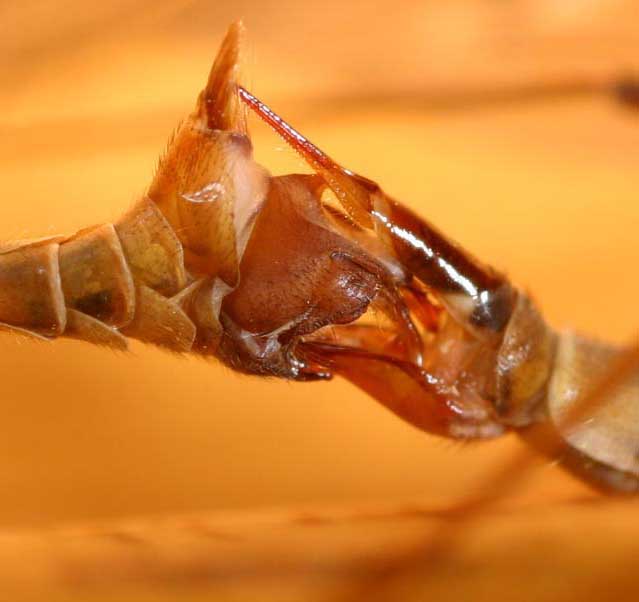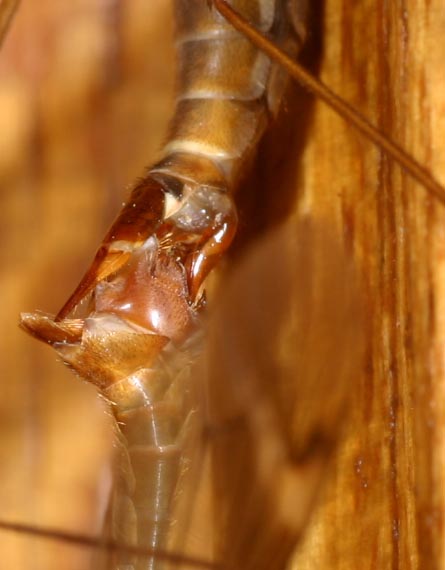Diptera.info :: Identification queries :: Diptera (adults)
Who is here? 1 guest(s)
|
a tipulid for haematocephalus
|
|
| rvanderweele |
Posted on 08-11-2006 19:38
|
|
Member Location: Zoelmond, the Netherlands Posts: 1984 Joined: 01.11.06 |
I felt so sorry for haematocephalus about his remark that there are too few postrings on TIpulidae. By change there was today a posting about Limoniidae. Nevertheless....a tipula couple in copula, a close up. The picture was taken this summer in France. rvanderweele attached the following image:  [41Kb] ruud van der weele rvanderweele@gmail.com |
|
|
|
| kitenet |
Posted on 08-11-2006 20:14
|
|
Member Location: Buckinghamshire, UK Posts: 118 Joined: 04.05.06 |
Thank you Ruud for indulging me and providing this intimate portrait! It looks a bit like the British species Tipula (Lunatipula) lunata, but the male genitalia are not the same. It appears that the male abdomen is twisted through 180 degrees compared to the female, is that something that many craneflies do? If so I'd not realised it before. You are most kind  ! !Martin Martin Harvey |
| rvanderweele |
Posted on 08-11-2006 20:30
|
|
Member Location: Zoelmond, the Netherlands Posts: 1984 Joined: 01.11.06 |
here the same couple, from another position
rvanderweele attached the following image:  [45.49Kb] ruud van der weele rvanderweele@gmail.com |
|
|
|
| Chen Young |
Posted on 10-11-2006 16:54
|
|
Member Location: Pittsburgh, PENNSYLVANIA USA Posts: 169 Joined: 25.08.05 |
to show the rotation of male during mating. Actually some of the small-sized crane flies such as genus Ormosia, and others the males have evolved to the point that the entire ninth sgement of the abdomen has undergone a rotation of approximately 180 degree so the tergal plate lies on the sternal surface of the body. Assumed they are just too small to sustain the rotation as the large sized tipulids can do. |
| Jump to Forum: |
















